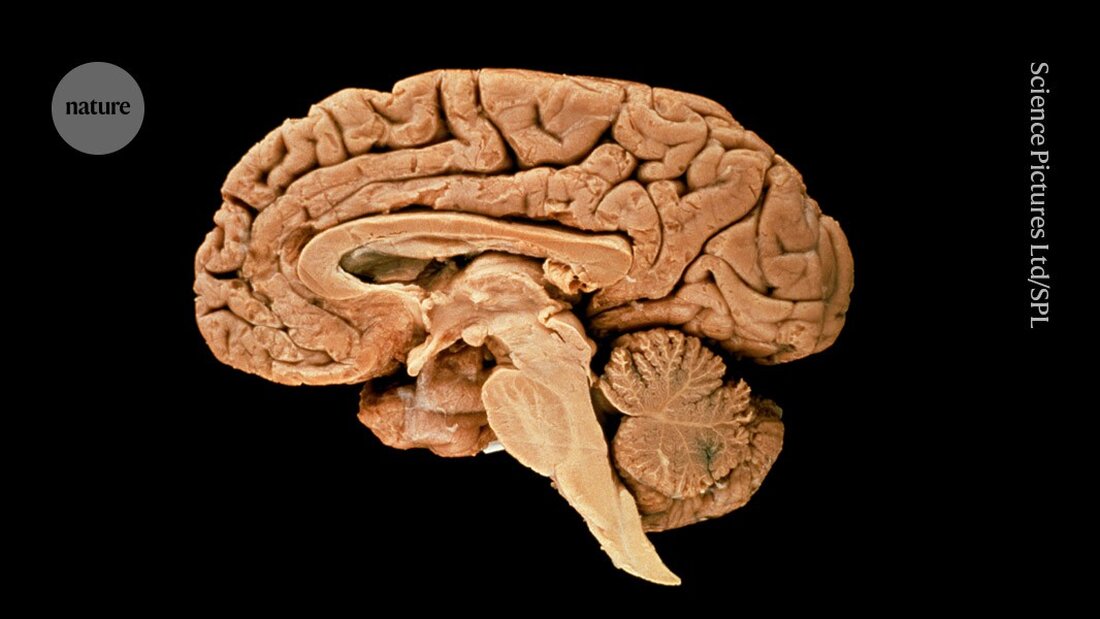This is how human brains got bigger: Our cells coped with the stress of size
Scientists study how human brain cells cope with stress to support the growth of our large brains.

This is how human brains got bigger: Our cells coped with the stress of size
Humans have evolved disproportionately large brains compared to our primate relatives—but this neurological upgrade came at a price. Scientists studying this trade-off have discovered unique genetic traits that reveal how human brain cells deal with the stress of keeping a large brain functioning. This research could open up new approaches to better understand diseases such as Parkinson's and schizophrenia.
The study published on November 15th 1 focuses on neurons that produce the neurotransmitter dopamine. This is crucial for movement, learning and emotional processing.
By comparing thousands of lab-grown dopamine neurons from humans, chimpanzees, macaques and orangutans, the researchers found that human dopamine neurons express more genes that promote the activity of damaging antioxidants than the neurons of other primates.
The results, which have not yet been peer-reviewed, are a step toward "understanding human brain evolution and all the potential positive and negative aspects associated with it," explains Andre Sousa, a neuroscientist at the University of Wisconsin–Madison. “It is interesting and important to really find out what is specific about the human brain, with the potential to develop new therapies or even prevent diseases in the future.”
Stressed neurons
Just as upright walking has led to knee and back problems, and changes in jaw structure and diet have led to dental problems, the rapid expansion of the human brain over evolutionary time has created challenges for its cells, says study co-author Alex Pollen, a neuroscientist at the University of California, San Francisco. “We hypothesized that a similar process occurred and that these dopamine neurons may represent vulnerable joints.”
Using an imaging technique, Pollen and his team showed that two regions of the brain that require dopamine are significantly larger in humans than in macaques. The prefrontal cortex is 18 times larger and the striatum is almost seven times larger.
Still, humans only have about twice as many dopamine neurons as their primate relatives, Pollen says. These neurons therefore have to stretch further and work harder - each forming more than two million synapses - in the larger, more complex human brain.
“The dopamine neurons are real athletes,” says Nenad Sestan, a developmental neuroscientist at Yale University in New Haven, Connecticut. “They are constantly activated.”
To understand how human dopamine neurons may have adapted to meet the demands of a large brain, Pollen and his colleagues grew versions of these cells in the laboratory.
They combined stem cells - which can develop into many cell types - from eight humans, seven chimpanzees, three macaques and an orangutan and grew them into miniaturized, brain-like structures called organoids. After 30 days, these structures began producing dopamine, mimicking a developing brain.
The team then genetically sequenced the dopamine neurons to measure which genes were activated and how they were regulated.
In an analysis of human and chimpanzee neurons, researchers found that the human neurons expressed higher levels of genes that manage oxidative stress - a type of cell damage that can be caused by the energy-intensive process of dopamine production. These genes encode enzymes that break down and neutralize toxic molecules called reactive oxygen species that can damage cells.
To investigate whether human dopamine neurons may have evolved unique stress responses, the authors applied a pesticide that causes oxidative stress to the organoids. They found that neurons that developed from human cells increased their production of a molecule called BDNF, which is reduced in people with neurodegenerative diseases such as Parkinson's. However, the same response was not observed in chimpanzee neurons.
Strengthening resilience
Understanding these protective mechanisms could support the development of therapies that strengthen the cellular defenses of people at risk of developing Parkinson's disease. “Some of these protective mechanisms may not be present in everyone due to mutations,” explains Sousa. “This creates additional vulnerability for these individuals.”
“There are some potential targets that could be very interesting to perturbate and then transplant into [animal] models of Parkinson's to see if these give the neurons more resilience,” says Pollen.
The organoids examined in the study represent developing neurons equivalent to those present in an embryo and do not capture the full complexity of adult neurons. Future research needs to examine how such protective mechanisms persist in mature and aging neurons, says Sousa, since "degenerative diseases affecting these cells usually occur at a late age."
-
Nolbrant, S. et al. Preprint at bioRxiv: https://doi.org/10.1101/2024.11.14.623592

 Suche
Suche
 Mein Konto
Mein Konto
